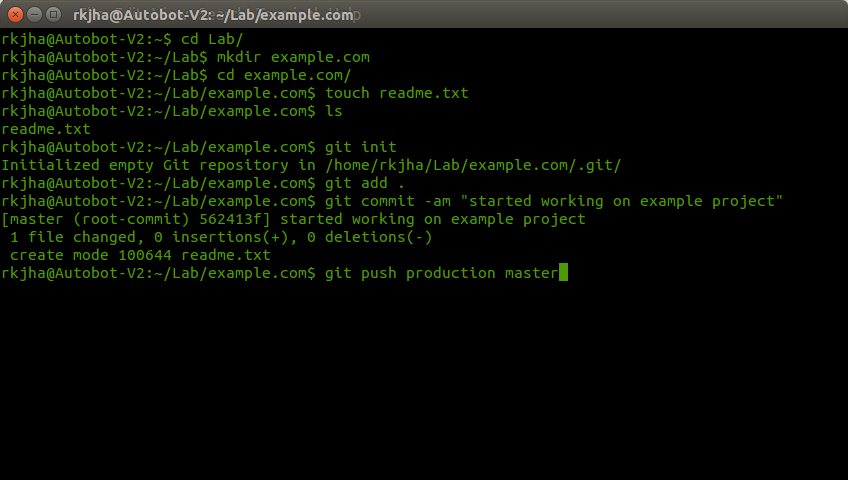git is a distributed open source version control system. If you’re not already familiar with git then read some free tutorials listed here and come back after you have some basic understanding to follow through the tutorial. Whether it’s a static website or a fun project, it’s usually a good idea to use a version control system such as git. Additionally, git can also help you in deployment and make your development workflow much easier and simpler.

Step #1. Server Setup
If you’ve not already selected a VPS then get one there on Digital Ocean or Linode. Make sure you select Ubuntu (preferably : 14.04 LTS) for the server OS. Otherwise, you may need to adjust few commands depending on the Linux distribution you’re using.
Step #2. Configure git on the server
SSH into the remote server and configure git for deployment.
ssh example_user@IP_ADDRESS mkdir example.git cd example.git git init --bare
Next, create a git hook – a shell script that will be executed on git push (to update code on server).
nano ~/example.git/hooks/post-receive
Here is a sample post-receive script you can use : (use Ctrl+X to save and exit)
And make it executable.
chmod +x ~/example.git/hooks/post-receive
Step #3. Install and configure git on dev machine
First, install git, move into your project directory and commit it under git.
sudo apt-get -y install git-core cd example.com git init git add . git commit -am "MVP is ready for the wild"
Add remote repository for deployment server.
git remote add production ssh://example_user@IP_ADDRESS/~/example.git
And now, you’re ready to deploy. Just type (to push recent changes to live server) :
git push production master
Step #4. Configure nginx
ssh into the server and create a nginx config for the domain (example.com).
sudo nano /etc/nginx/sites-available/example.conf
Here is a sample config you could use :
sudo ln -s /etc/nginx/sites-available/example.conf /etc/nginx/sites-enabled/example.com sudo service nginx reload
Now, update the DNS settings at the registrar and create two records – one for naked domain (e.g example.com) and other for www-version of the website (e.g www.example.com) – both pointing to the server IP. And, wait for the DNS to be propagated (few minutes).
Sounds like a good way to deploy jekyll blogs to linode. I’ll file this away! Thx.